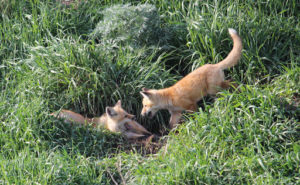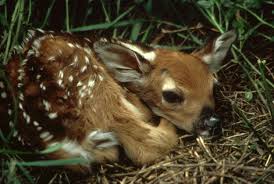Adventure
3 Reasons to Leave Young Wildlife Alone

Yes, I want to play fetch with them, too.
Every year, the outdoor writers of the world receive desperate pleas from the various fish and wildlife departments around the country to please tell our readers to leave young wildlife alone. This year, the pleas have been particularly urgent–most likely because social-distancing mandates related to COVID-19 have caused millions of Americans to seek exercise and amusement in the outdoors. For the most part, this is a tremendously positive development to have come from the pandemic…but many of the “newbies” don’t understand the basics of conservation. According to the Vermont Fish & Wildlife Department, they’re currently being swamped by people who have taken in baby critters…and those people are getting some nasty surprises about the actual consequences of their misguided attempts to help. Here are three reasons why taking in a baby animal that one finds in the outdoors is a very bad idea.

Remember the idiots who “rescued” a bison calf? It had to be euthanized.
1. That Baby Critter Almost Certainly Does Not Need Help
“Most young wildlife should be left in the wild as the adults, although not visible, are likely close by. In addition, taking in any wild animal is not only unsafe, it is illegal in Vermont,” says Vermont Fish & Wildlife Department furbearer biologist Kim Royar. “We have seen a tremendous increase in numbers of people who have taken in young wild animals recently, but these folks are finding that wildlife rehabilitation centers are at maximum capacity and are turning away new animals.”
Having been removed from their mothers and unable to care for themselves, these baby animals often have to be euthanized, leaving their temporary caretakers and their families heartbroken despite their good-willed attempts to help wildlife.

Must…not…pet…baby…skunk
2. That Adorable Skunk Kit Can Actually Threaten Your Life
If it turns out that baby critter does indeed need help, you’re not the person to give it. Sick and injured animals are potentially quite dangerous to an untrained person. Just like people, injured animals will often behave uncharacteristically aggressively. But the risk of a physical injury, such as a bite, is overshadowed by the threat of what that bite might transmit–notably, rabies. Rabies season is well underway, and rabid animals often lose their natural fear of humans in the earlier stages of the disease. This causes them to act “friendly,” and they may well approach you. Rabies basically has a 100% mortality rate (so far, the Milwaukee Protocol has only saved 2-3 people). For that reason, if you approach a baby critter and are bitten or scratched, your doctor may well insist you undergo a prophylactic rabies shot series…and the animal will be euthanized anyway, because that’s the only way to test for the virus.

See you in five years.
3. You Might Be a Vector That Infects Wildlife With Coronavirus
What’s more, nobody knows whether or not the COVID-19 virus can be transmitted to our native wildlife populations. This uncertainty is also forcing wildlife rehabilitation facilities and animal control specialists to reduce or cease their activities on potentially susceptible species during the global pandemic.
Here are a few simple additional considerations to help keep yourself and wildlife safe:
- Deer and moose nurse their young at different times during the day, and often leave their young alone for long periods of time. These animals are not lost. Their mother knows where they are and will return.
- Young birds on the ground may have left their nest, but their parents will still feed them.
- Young animals such as fox and raccoon will often follow their mother. The mother of a wildlife youngster is usually nearby and just out of sight to a person; your presence alone may keep the mother from returning to her young.
- Many wildlife species will not feed or care for their young when people are close by. Obey signs that restrict access to wildlife nesting areas, including hiking trails that may be temporarily closed.
- Keep domestic pets indoors, leashed or fenced in. Dogs and cats kill many baby animals each year.
- Avoid projects that remove trees, shrubs and dead snags that contain nests during the spring and summer.
Chances are that if you’re reading this, you already know this information…but many of your friends may not. Your local fish and wildlife department would probably appreciate a signal boost in the form of a social-media share…and so would we!
-

 Adventure2 months ago
Adventure2 months agoElk Calling Tips: Essential Guide for First-Time Hunters
-

 Accessories2 months ago
Accessories2 months agoBackcountry Trails 2025: Top 10 Hacks & Gear
-

 Adventure1 month ago
Adventure1 month agoE-Bike Trails During Fall 2025 in the US | Autumn Routes 🚲🍁
-

 Accessories1 month ago
Accessories1 month agoKilian Jornet States of Elevation Midway Update
-

 Uncategorized2 weeks ago
Uncategorized2 weeks agoBest Corn Mazes 2025: Top 10 in the US for Fall Fun






